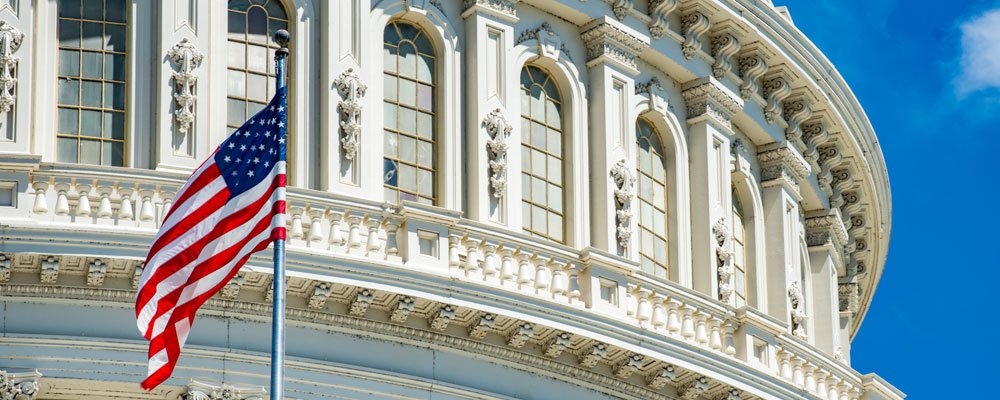On March 31, 2021, President Biden introduced the first version of a $2.3 trillion infrastructure plan called the American Jobs Plan. On the surface, the legislation addresses a bipartisan issue to improve physical infrastructure and advanced manufacturing; however, the first draft has garnered mixed reactions from both sides of the aisle.
In its current form, the American Jobs Plan impacts the construction industry in two primary ways: spending on infrastructure and the inclusion of the Protecting the Right to Organize (PRO) Act. Below, we break down these two major components and explain what the industry can expect from the latest legislation.
Construction Spending on Infrastructure
The price tag is off-putting to some and seen as not enough to others. In any case, the $2.3 trillion package is spread out over eight years. Of the Plan’s total, the following areas most directly affect the construction industry.
- $213 billion: Affordable Sustainable Housing
- $115 billion: Roads and Bridges
- $111 billion: Water, Wastewater, and Stormwater Systems
- $100 billion: High-Speed Broadband
- $100 billion: Upgrade the Power Grid
- $100 billion: Workforce Development
- $42 billion: Ports and Airports
Additional spending in the American Jobs Plan includes in-home care, advanced manufacturing, research and development, and money for schools, childcare facilities, veteran’s hospitals, and other federal buildings. The plan also calls for construction of around 500,000 electric vehicle charging stations.
Construction companies and their suppliers will stand to benefit substantially from certain parts of the American Jobs Plan. More than 20,000 miles of roads are set to be modernized, 10,000 bridges repaired, and public investment in infrastructure is expected to match levels in the 1960s. Some experts are cautioning a potential inflationary impact on construction, which is partially struggling due to rising raw material costs.1
Yet, the American Jobs Plan is still welcome news for an industry battered with job delays, cancellations, and worker shortages. “New infrastructure investments will certainly help with demand, but the industry also needs Washington to help address supply-chain problems and rising costs,” said Stephen Sandherr, CEO of the Associated General Contractors of America.2 And, federal investment in worker training and development will help employers develop talent to complete some of the more specialized jobs.
At this point, funding for the American Jobs Plan largely comes from corporations. The four main funding sources are:3
- Raising the corporate tax from 21 to 28 percent
- Raising taxes on multinational corporations, such as raising the minimum global profits tax and closing tax loopholes that allow corporations to lower their U.S. tax liability on overseas profits
- Increasing IRS enforcement for large corporations
- Removing tax preferences for fossil fuel producers
If passed, it’s expected that many of the construction projects contained in the American Jobs Plan would lean toward unions.
PRO Act
The PRO Act already passed the House of Representatives on March 9, 2021 – and in 2019, though it never advanced to the Senate. Including the PRO Act in the American Jobs Plan all but ensures that the Senate will be tasked with at least reviewing it, if not acting upon it. If passed in its current form, the PRO Act represents what could be the biggest change to labor law in decades.
Advocates of the PRO Act say that it supports unions and workers’ right to organize, while opponents point to anti-employer stipulations that could drive up the cost of public projects. Under the Act, prevailing wages would be tied to federal investments and employers benefiting from the Act would be required to follow stricter labor standards. While construction is already union-heavy, other industries that stand to benefit from the American Jobs Plan, like telecommunications and transportation, would be motivated to organize.
Some of the main components of the PRO Act include:4
- Instituting joint employer liability for unfair labor practices
- Revising definitions of supervisors and independent contractors so that more workers fall under covered “employees”
- Changing several union election rules, such as the ability to hold quick elections and prohibiting employers from requiring employees to attend meetings regarding rights and options
- Removing right-to-work protections
- Expanding rights to picketing and strikes
- Revoking an employer’s right to prohibit offensive lockouts and replace workers hired during a strike
- Permitting arbitration panels to decide on collective bargaining contracts if an agreement has not been reached within 120 days
- Expanding access to liquidated damages, civil penalties, and statutory remedies for discrimination and retaliation
- Increasing employer reporting for legal opinions deemed an attempt to persuade employees on their rights
Most, if not all, of the above provisions, are strongly discouraged by industry leaders and organizations. Some elements of the PRO Act go directly against legal precedent, likely setting the stage for battles over which provisions will be included in the final version. The Senate could vote on the PRO Act separately if it has enough support to call a vote; presently, they are still at least five or six votes short.
Looking Ahead
The American Jobs Plan and the PRO Act could both undergo changes before becoming law – if both bills are passed. Construction firms will want to maintain an awareness of what’s happening in Washington and if needed, adjust planning and budgets in anticipation of higher demand for public projects later in 2021 and throughout the next several years.
Stay tuned to the PBMares blog for more insight as details become available. Contact Jennifer French, CPA, Partner and Leader of PBMares’ Construction and Real Estate Team, with questions.
1 https://www.wsj.com/articles/bidens-infrastructure-plan-which-sectors-would-benefit-11617278854?mod=series_bideninfrastructure
2 https://www.agc.org/news/2021/04/01/construction-spending-slips-february-shrinking-demand-soaring-costs-and-supply
3 https://www.nytimes.com/2021/03/31/business/economy/biden-infrastructure-plan.html
4 https://www.natlawreview.com/article/us-house-passed-pro-act-how-it-could-affect-future-labor-law





